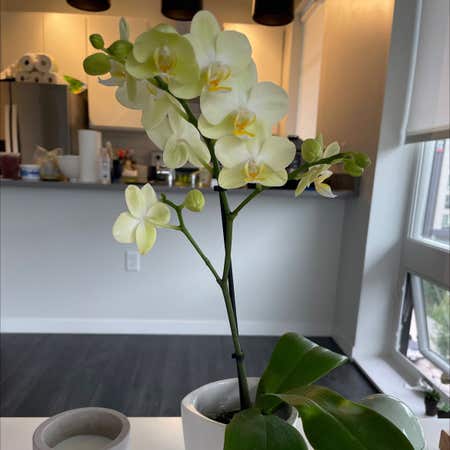

Greater Butterfly-Orchid
Also known as
Habenaria chlorantha, Habenaria chloroleuca, Habenaria montana, Habenaria virescens, Orchis bifolia elatior, Orchis bifolia macroglossa, Orchis bifolia montana, Orchis montana, Orchis ochroleuca, Orchis virescens, Platanthera bifolia chlorantha, Platanthera bifolia montana, Platanthera chlorantha angustata, Platanthera chlorantha bracteata, Platanthera chlorantha chlorantha, Platanthera chlorantha grandiflora, Platanthera chlorantha gselliana, Platanthera chlorantha montana, Platanthera chlorantha robusta, Platanthera holmboei, Platanthera lesbiaca, Platanthera montana, Platanthera montana gselliana, Platanthera virescens and Pseudanthera breadalbanensis
Taxonomy

Platanthera chlorantha
Platanthera
Orchidaceae
Asparagales

How to care for Greater Butterfly-Orchid
How often to water your Greater Butterfly-Orchid

every 9
Greater Butterfly-Orchid needs 0.5 cups of water every 9 when it doesn’t get direct sunlight and is potted in a 5" pot.
Use our water calculator to personalize watering recommendations to your environment or download Greg for more advanced recommendations for all of your plants.

Water 0.5 cups every
9
Finding light for Greater Butterfly-Orchid in your home

a window
Greater Butterfly-Orchid love being close to bright, sunny windows 😎.
Place it less than 1ft from a south-facing window to maximize the potential for growth.
Greater Butterfly-Orchid does not tolerate low-light 🚫.
Select your region to see how the current weather in your area affects the placement of Greater Butterfly-Orchid in your home 🏡.
How to fertilize Greater Butterfly-Orchid

Most potting soils come with ample nutrients which plants use to produce new growth.
By the time your plant has depleted the nutrients in its soil it’s likely grown enough to need a larger pot anyway.
To replenish this plant's nutrients, repot your Greater Butterfly-Orchid after it doubles in size or once a year—whichever comes first.
Care Summary for Greater Butterfly-Orchid

Greater Butterfly-Orchid
 Greg recommends:
Greg recommends:
 Water
Water
0.5 cups every 9 days
 Placement
Placement
< 1ft from a window
 Nutrients
Nutrients
Repot after 2x growth
Based on the 4” pot your plant is in, and that it doesn’t get direct sunlight.

 Trending in your area
Trending in your area
 Similar to Greater Butterfly-Orchid
Similar to Greater Butterfly-Orchid
✨ Discover rare plants

Scindapsus pictus 'Si…

Vatricania guentheri

Hoya pottsii 'Khao Ya…

Aglaonema Spitfire

Large Leaf Elephant F…

Tillandsia caerulea A…

Strawberry Shake Phil…

Maroon Pitcher Plant

Begonia lubbersii

Orange Lipstick Plant

Anthurium 'Fantasy Lo…

Rainbow Echeveria

Anthurium papillilami…

White Apple Moth Orch…

Pine Cone Plant

Caladium

Euphorbia Ammak






























